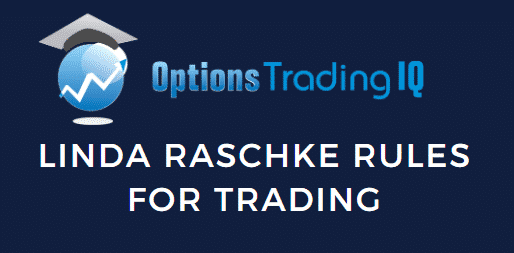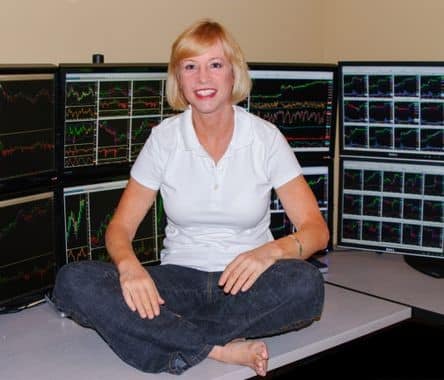

Contents
Introduction
Linda Raschke is an American trader who is the president of LBRGroup as well as LBR Asset Management.
She focuses on futures and commodities primarily in her own account since retiring from active management in 2015.
She graduated from Occidental College and started working in finance in 1981 trading on the Pacific Coast Stock Exchange and later the Philadelphia Stock Exchange.
Her hedge fund, which she started in 2002, was ranked by Barclays 17th out of 4500 for best trailing 5-year performance.
Linda was also featured in Jack Schwager’s book, The New Market Wizards.
She has lectured widely and her research has been presented and published by industry groups and media outlets across the world.
Linda taught professional traders and bankers in 22 countries while on tour with Dow Jones.
The former president of the American Association of Professional Technical Analysts co-authored a best-selling book on trading and technical analysis called Street Smarts—High Probability Short Term Trading Strategies.
Her book is considered to be one the best ever written about trading futures (Used on Amazon for $456!) and covers topics like swing trading, pattern recognition, and volatility.
She’s fairly active on Twitter (@LindaRaschke) and also occasionally posts on her blog.
Start With The Long Term View
Linda likes to start with a top-down approach.
This is a fairly well-known strategy but it’s worth looking into with a bit more detail.
A top-down approach typically refers to the method of starting with a global view before narrowing down to the details of a specific security or contract.
In Linda’s case, it also refers to the time horizon.
It’s very unlikely that you’ll hear Linda talking about small time horizons.
She’s fairly active on Twitter and you simply won’t find her posting charts that show anything less than one month.
I think a good analogy for this methodology is to not miss the forest for the trees.
If the forest is one fire but you become preoccupied with a particular tree, you’re going to be disproportionately exposed to risk once the fire reaches your neck of the woods.

Determine What Kind Of Day It Is. Mean Reversion Or Trend?
Following her top-down approach, Linda likes to determine exactly what type of day it is before she starts trading.
For her, the day is either a trending day or a reversion day, and she will trade differently depending on this determination.
If the day is trending day this means that the market is likely to move in one direction strongly.
Over some time horizon, the index or security is likely to reach higher-highs or lower-lows depending on the larger trend of the market.
If it’s a day for mean reversion the market is likely to oscillate around it’s mean.
It may be trading within a range or band or it may also be reacting to trending patterns in previous sessions.
Linda says that this determination can be done the night before when the market is closed.
This gives you the advantage of starting the morning with an idea about where you’re headed and therefore “a trader can adjust his game plan for the next day and be prepared to place resting buy or sell stops at appropriate levels.”
Determine Which Strategy To Use. Buy, Sell, Or Sell Short?
Once the macro picture is clear and the type of day is determined, it’s time to decide which strategy to use.
Depending on the direction of the overall trend and the strength of the move, Linda will place her bets and hold them accordingly.
If the market is trending higher then you’ll want to buy and hold for a longer time period.
This is what’s known as letting a winner run.
On a trending day, you expect the market to move further for longer so you’ll have the opportunity to make big money if you have the conviction to see the trade through.
These days can also result in catastrophic losses if you take the wrong side and take too long to close the position or worse, average into them.
She says, “A trader caught off guard will often experience his largest losses on a trend day as he tries to sell strength or buy weakness prematurely.
Because there are few intraday retracements, small losses can easily get out of hand.
The worst catastrophes come from trying to average losing trades on trend days.”
Linda’s first 7-figure day came when she took a short position on an ES contract during a huge downward trend day.
She held the position until the close of the market before exiting the position.
Selling on the close of the market is a strategy that she likes to use regularly.
She says, “One of the easiest and more popular ways to exit a breakout trade is simply to exit ‘Market-On-Close.’
The ideal trend day closes near the opposite extreme of the day’s range from the opening.
This strategy keeps the trader in the market throughout the day, yet requires no overnight risk.”
If you’re a small, individual trader, this has the added benefit of not having to concern yourself with maintenance margin requirements at your broker.
While you should always be aware of brokers’ margin requirements, if you exit your position before the close, you’ll never be forced into a position where you’re required to either flatten your open positions or meet the required maintenance margin.
Size Your Bets
Linda also emphasizes that not all bets are equal and that you should size your bets accordingly.
She uses several different trading systems and while not all of them are performing the same or even profitable over a time period, this is a feature, not a bug.
By running several different systems and placing variously sized bets within those systems, she ensures that by the end of the year she will have had enough big winners and small losers to make her operation profitable.
Several famous traders have similar recommendations: The more confident you are, the more you should bet.
For Linda, who uses trading systems, her confidence goes up when more than one of her systems indicates the same movement.
When talking about her first 7-figure day she said, “The market was overbought, the sentiment readings showed too much bullishness, the 2-period rate of change was poised to flip down and my models lined up like a rare planetary alignment.”
This is the time when you need to pull the trigger and let the trade run.
If you begin to lose conviction through the course of the day she recommends that you scale out to take some chips off the table while leaving some runners open.
Summary
Linda says, “If you are going to trade a mechanical system, you must be willing to enter all trades!
It is impossible to know which trades will be winners and which ones losers.
Most traders who ‘pick-and-choose’ have a knack for picking the losing trades and missing the really big winners.
The hardest trades to take tend to work out the best!
With most systems, a majority of the profits come from less than 5% of the trades.”
Build your system, trust it, and understand the environment that you’re operating in.
Cut losers fast and let winners run.
Trade safe!
Disclaimer: The information above is for educational purposes only and should not be treated as investment advice. The strategy presented would not be suitable for investors who are not familiar with exchange traded options. Any readers interested in this strategy should do their own research and seek advice from a licensed financial adviser.











I’m also enjoying her new book, “Trading Sardines”
Haha, great name. I’ll have to check it out. Thanks!